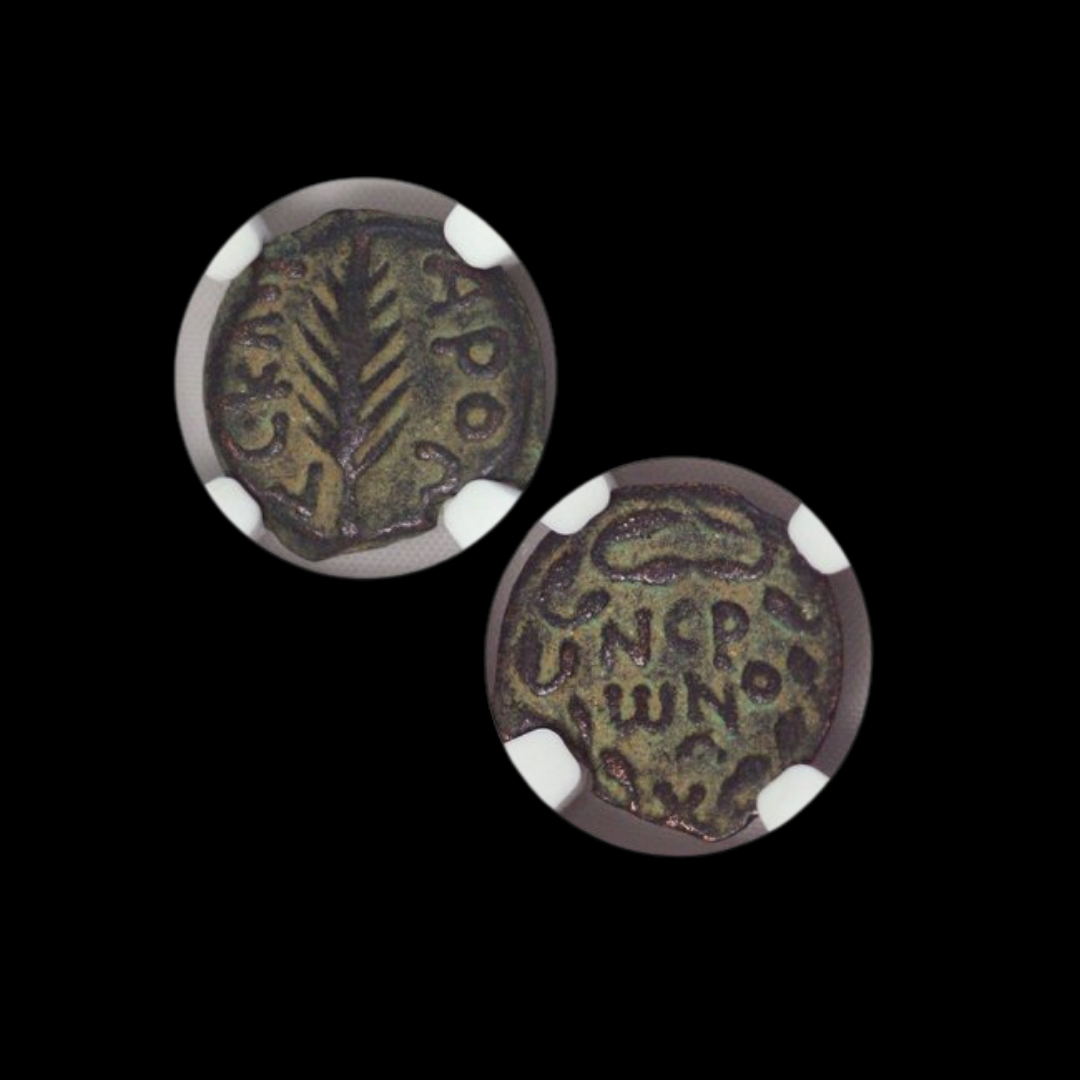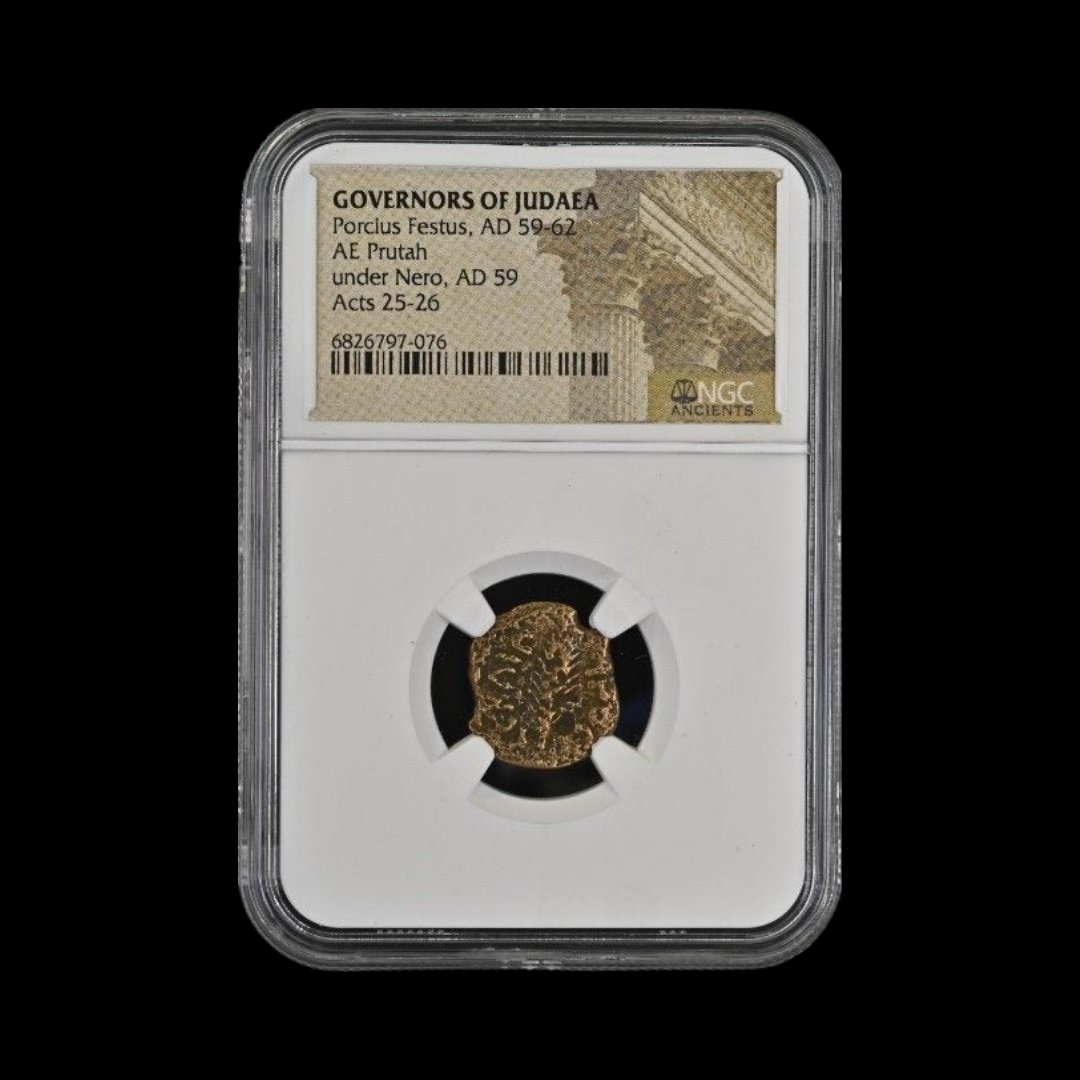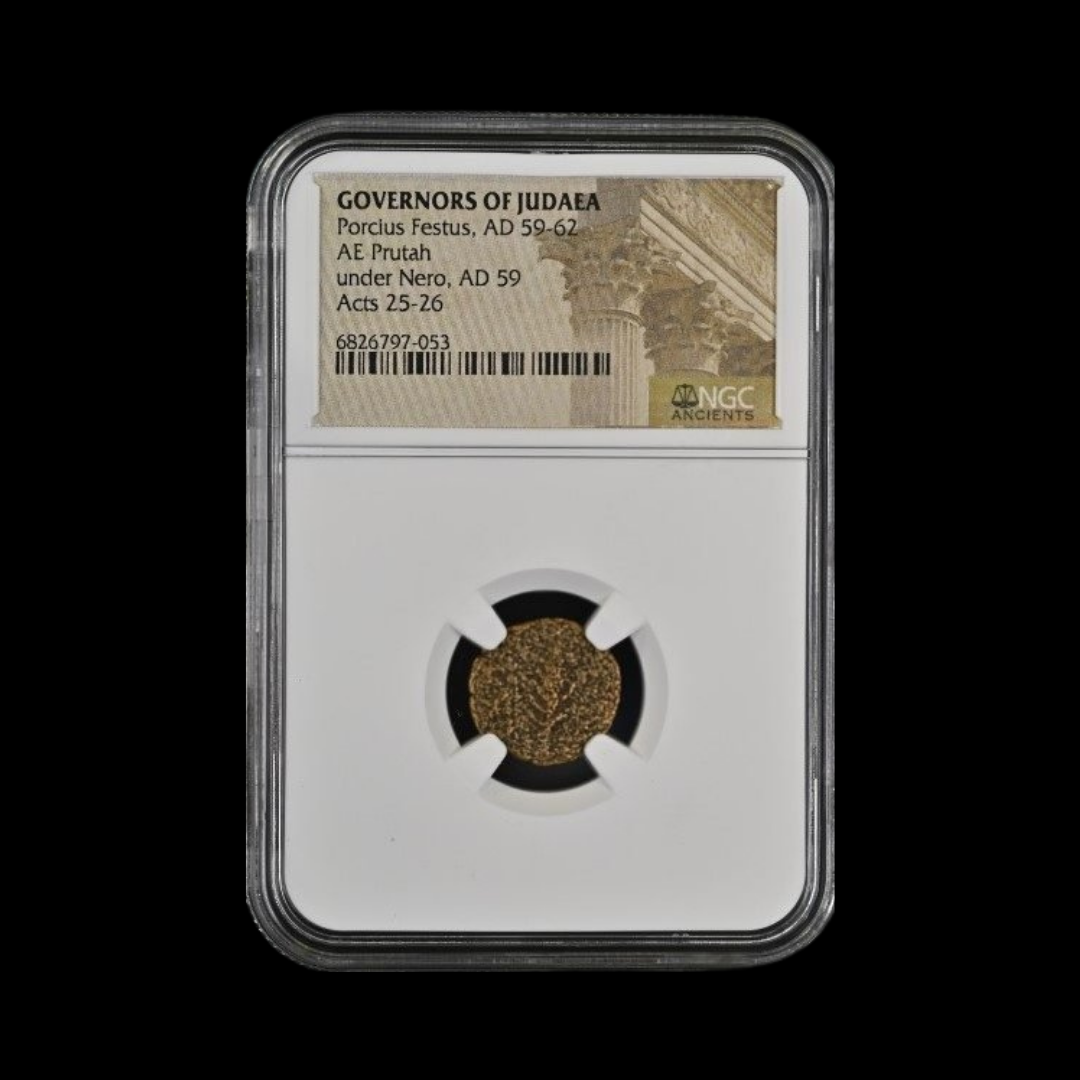 Image 1 of 5
Image 1 of 5

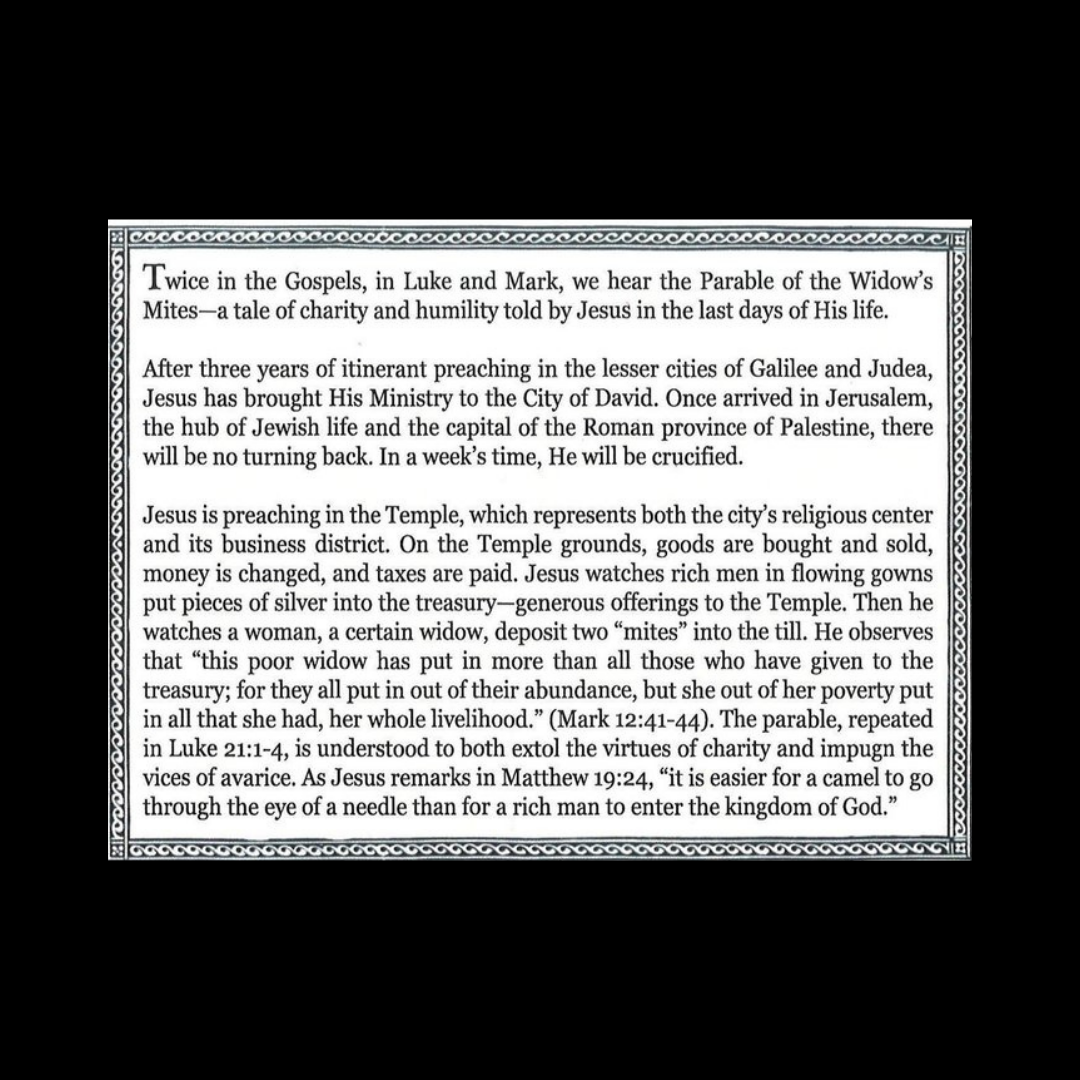 Image 2 of 5
Image 2 of 5

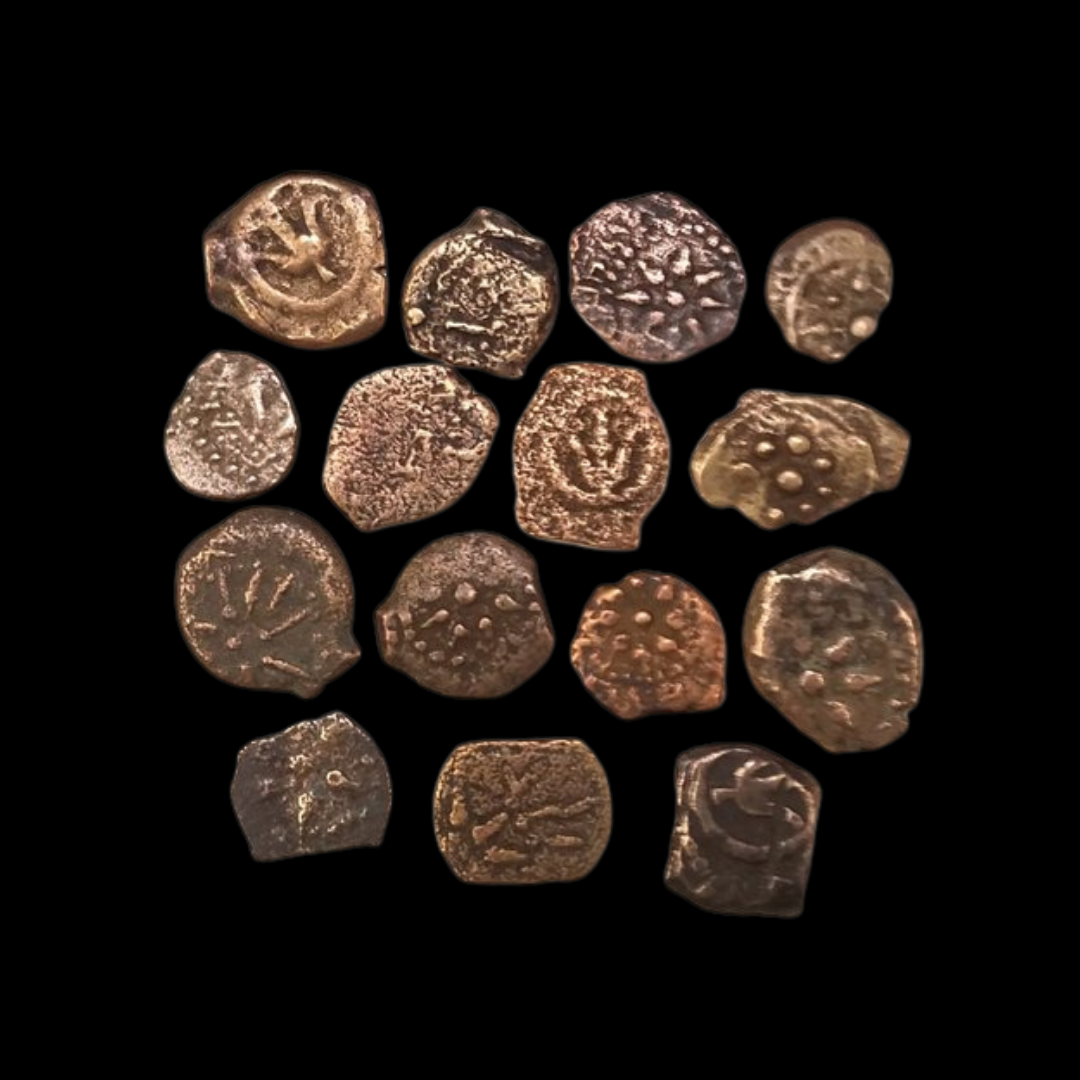 Image 3 of 5
Image 3 of 5

 Image 4 of 5
Image 4 of 5

 Image 5 of 5
Image 5 of 5






Judean Bronze Prutah "Widow's Mite" (about 2,100 years ago)
This small bronze coin, known as a prutah, was issued by Alexander Jannaeus, ruler of the Hasmonean Kingdom of Judea (modern Israel/Palestine) around 100 BCE. This humble bronze denomination became famous in Christian tradition as the "widow's mite" referenced in Jesus' parable in the Gospels of Mark and Luke about sacrificial giving.
Coin Description:
Front side: Typically features an anchor (symbol of the Hasmonean dynasty) surrounded by a circular inscription in ancient Hebrew or Greek letters giving the king's name and title.
Back side: Usually depicts a star or wheel-like design, possibly representing a diadem or star, with additional Hebrew or Greek inscription identifying Alexander Jannaeus as king.
Technical Details:
Material: Bronze
Denomination: Prutah (the smallest bronze denomination in ancient Judean currency)
Minting date/period: c. 100 BCE (approximately 2,100 years ago)
Condition: Varies by specimen
Historical Significance:
This coin gained lasting fame through Jesus' parable about a poor widow who contributed "two mites" (small coins of minimal value) to the Temple treasury. Jesus praised her sacrifice as greater than the rich who gave from their abundance, since she gave "all she had." These humble coins circulated in Jerusalem during the time of Jesus, making them tangible connections to New Testament events and early Christianity. Their continued cultural significance far exceeds their modest monetary value.
This small bronze coin, known as a prutah, was issued by Alexander Jannaeus, ruler of the Hasmonean Kingdom of Judea (modern Israel/Palestine) around 100 BCE. This humble bronze denomination became famous in Christian tradition as the "widow's mite" referenced in Jesus' parable in the Gospels of Mark and Luke about sacrificial giving.
Coin Description:
Front side: Typically features an anchor (symbol of the Hasmonean dynasty) surrounded by a circular inscription in ancient Hebrew or Greek letters giving the king's name and title.
Back side: Usually depicts a star or wheel-like design, possibly representing a diadem or star, with additional Hebrew or Greek inscription identifying Alexander Jannaeus as king.
Technical Details:
Material: Bronze
Denomination: Prutah (the smallest bronze denomination in ancient Judean currency)
Minting date/period: c. 100 BCE (approximately 2,100 years ago)
Condition: Varies by specimen
Historical Significance:
This coin gained lasting fame through Jesus' parable about a poor widow who contributed "two mites" (small coins of minimal value) to the Temple treasury. Jesus praised her sacrifice as greater than the rich who gave from their abundance, since she gave "all she had." These humble coins circulated in Jerusalem during the time of Jesus, making them tangible connections to New Testament events and early Christianity. Their continued cultural significance far exceeds their modest monetary value.
This small bronze coin, known as a prutah, was issued by Alexander Jannaeus, ruler of the Hasmonean Kingdom of Judea (modern Israel/Palestine) around 100 BCE. This humble bronze denomination became famous in Christian tradition as the "widow's mite" referenced in Jesus' parable in the Gospels of Mark and Luke about sacrificial giving.
Coin Description:
Front side: Typically features an anchor (symbol of the Hasmonean dynasty) surrounded by a circular inscription in ancient Hebrew or Greek letters giving the king's name and title.
Back side: Usually depicts a star or wheel-like design, possibly representing a diadem or star, with additional Hebrew or Greek inscription identifying Alexander Jannaeus as king.
Technical Details:
Material: Bronze
Denomination: Prutah (the smallest bronze denomination in ancient Judean currency)
Minting date/period: c. 100 BCE (approximately 2,100 years ago)
Condition: Varies by specimen
Historical Significance:
This coin gained lasting fame through Jesus' parable about a poor widow who contributed "two mites" (small coins of minimal value) to the Temple treasury. Jesus praised her sacrifice as greater than the rich who gave from their abundance, since she gave "all she had." These humble coins circulated in Jerusalem during the time of Jesus, making them tangible connections to New Testament events and early Christianity. Their continued cultural significance far exceeds their modest monetary value.






